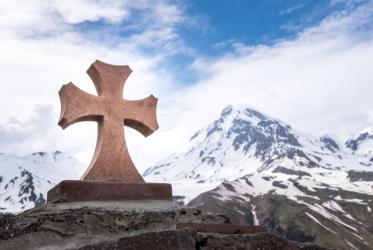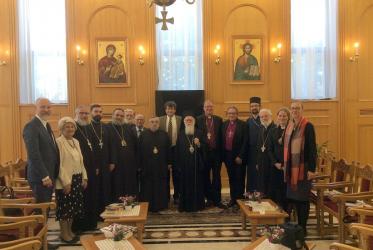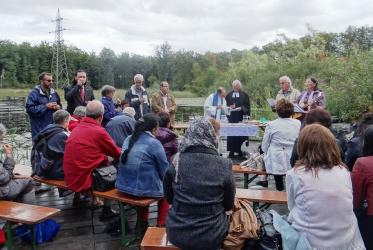Autokephale Orthodoxe Kirche von Albanien
(Kisha Orthodhokse Autoqefale e Shqipërisë)
The origins of Orthodoxy in Albania go back to the apostolic age. In Rom. 15:19 St Paul mentions Illyricum, the province of the Roman empire of which the territory of today's Albania was part. The southern part of Albania belonged for centuries to the Orthodox Byzantine sphere of influence. At the time of the schism in 1054, southern Albania retained its tie to Constantinople while northern Albania reverted to the jurisdiction of Rome. From the 15th to the 20th century, Albania was part of the Ottoman empire, and many of the people converted to Islam, often under pressure. At the beginning of the 20th century a nationalist independence movement emerged, which was led by people of Orthodox faith or descent. In 1937 the Orthodox Church of Albania was granted autocephaly by the Ecumenical Patriarch. Two years later the country was occupied by fascist Italy. Attempts were made to unite the Orthodox Church with Rome, but failed. Under communist rule from 1945 onwards, the Orthodox and other churches in Albania came under complete control of the state. Until 1967 it was the same type of persecution as in other communist countries. In 1967 Albania declared itself an atheist state. All forms of religious expression were constitutionally forbidden. Virtually all churches and monasteries were destroyed or turned into warehouses, barracks etc. Clergy were unfrocked, many of them were thrown into prison or sent into exile, and a number went to their martyrdom. Of the 440 priests who had served before communism only 22 survived this time of extreme hardship.
In 1991, following the political changes in Albania, the Ecumenical Patriarch appointed then-Bishop Anastasios Yannoulatos from Greece as Patriarchal Exarch, and subsequently as archbishop of Tirana, together with three diocesan metropolitans, also from Greece. After many difficulties with the Albanian authorities who opposed an all-Greek hierarchy, the holy synod of the Church of Albania was re-established in 1998, with two of the four hierachs being Albanian. Despite these trials, beginning in 1991 the Orthodox Church of Albania rose from its ruins. A remarkable revival and development began which radiated into many social sectors. The church started by proclaiming the gospel of love and peace. It developed a life of worship and cultivated a Christian (Orthodox) conscience. It re-established Orthodox parishes, with active liturgical lives in many cities and towns, as well as in hundreds of villages, and created Orthodox intellectual groups, women's groups and youth groups, which assist the church with ecclesiastical work. In 1992 an academy was created for the training of a new generation of priests, which is also open to women, who will serve as lay leaders in the church. An ecclesiastical high school was opened in 1998. Youth outreach is a major concern of the church, with national and regional youth offices, camps for youth and children, activities for students in the three universities, youth festivals, etc.
The church has developed social programmes in the areas of health and education, notably the "Annunciation" medical centre and the "Spirit of Love" institute for professional training. It is active in relief work for the destitute, and participated in the care for refugees during the Kosovo crisis in 1999. It is supporting agricultural and many other development programmes. Since 2001, an environmental programme has been ongoing. Beyond its borders, the Church of Albania contributes to peace and reconciliation in the Balkans.
Some 89 new churches have been built and 141 repaired, and more than 20 other constructions including diocesan centres, the academy, a monastery, schools, guest houses, etc., have been set up and 131 priests, all Albanians, have been trained and consecrated. More than statistics can tell, the story of the Orthodox Church in Albania is a story of resurrection (see The Resurrection of the Church in Albania, Jim Forest, WCC 2002).





